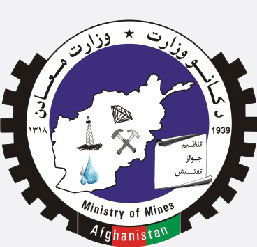Abstract
This dataset contains a collection of 24 folders, each representing a specific U.S. Geological Survey areas of interest (AOI; fig. 1), as well as datasets for AOI subareas. Each folder includes the extent, contours, Digital Elevation Model (DEM), and hydrography of the corresponding AOI, which are organized into feature vector and raster datasets.
Digital Elevation Model
Thirty-meter (m) resolution Advanced Spaceborne Thermal Emission and Reflection Radiometer (ASTER) Global Digital Elevation Model (GDEM) data were acquired from the National Aeronautics and Space Administration’s Warehouse Inventory Search Tool (WIST) server. Using Environmental Science Research Institute’s ArcMap 9.3, individual tiles were merged together with the “mosaic to new raster” tool to provide seamless coverage for each area.
The resulting DEMs were clipped to the AOIs (fig. 1) to reduce file size and to improve processing time and design aspects. Coverage was omitted in certain areas where ASTER DEM tiles were not acquired. However, all AOI subareas contain comprehensive DEM coverage, except for the North Herat barium limestone subset.
Projection
All datasets are projected to the Universal Transverse Mercator (UTM) coordinate system with the World Geodetic System of 1984 (WGS 84) datum. AOIs are projected to different UTM zones according to their geographic location. Afghanistan is divided into UTM zones 41N, 42N, and 43N.
Data Extraction and Modification
The “float” command of the 3D Analyst converts each cell value of the DEM from an integer to a floating point representation. Integer values restrict pixels to only numeric pictures. Floating point representations allow pixels to store decimal numbers, thereby storing a grid or range of intermediate values. Converting to float is important for focal statistics as it prevents rounding or truncating of pixel values.
The “fill” command of the Spatial Analyst removes data imperfections, such as pits and spikes, by filling in “sinks” and removing “peaks” in a raster.
“Focal statistics,” a subroutine in the Spatial Analyst extension, calculates a statistic on a raster over a specified neighborhood (Environmental Science Research Institute, 2010). Using a 3×3 neighborhood, mean statistics calculates the mean value of the center cell based on the eight values of the surrounding neighborhood cells.
A series of hydrologic functions was were applied on the raster that resulted from the previous three steps to create general hydrography for the MPAs. The “flow direction” process creates a raster of flow direction from each cell to its steepest downslope neighbor. The “flow accumulation” process creates a raster that represents the amount of rain that would flow through each cell, assuming that all rain became runoff and there was no interception, evapotranspiration, or loss to groundwater. This could also be viewed as the amount of rain that fell on the surface upslope from each cell (Environmental Science Research Institute, 2010).
The raster image derived from the DEM was reclassified to create flowpaths with an upstream contributing area with a threshold of 1,500 pixels or more. This eliminated dangles and stream orders. Finally, the resulting flowpath was converted to a new feature class.
Synthesized streams represent hydrography flowpaths based on the DEM only and have not been validated in the field or by remote sensing image capabilities. Seasonal variation in rainfall and snowmelt significantly eaffect hydrography in Afghanistan.
Contours were derived from the processed DEM using the “contour” command under the ArcGIS Spatial Analyst extension. Base contour and z-factor parameters were left at default values. Each set of contours (fig. 1) is clipped to the extent of the Mineral Project area or subset DEM. Project areas contain 100-, 50-, and when necessary, 25-m contours. Each subset contains a set of 100-, 50-, and 25-m contours.
Selected References
Environmental Science Research Institute, Inc., 2010, ArcGIS desktop help 9.3: Environmental Systems Research Institute, Inc., accessed March 23, 2011. (Available at http://webhelp.esri.com/arcgisdesktop/9.3/index.cfm.)
Peters, S.G., Ludington, S.D., Orris, G.J., Sutphin, D.M., Bliss, J.D., and Rytuba, J.J., eds., 2007, Preliminary non-fuel mineral resource assessment of Afghanistan: U.S. Geological Survey Open-File Report 2007–1214, 810 p. plus one appendix. (Available at https://pubs.usgs.gov/of/2007/1214/.)
|

![]() U.S. Department of the Interior |
U.S. Geological Survey
U.S. Department of the Interior |
U.S. Geological Survey

